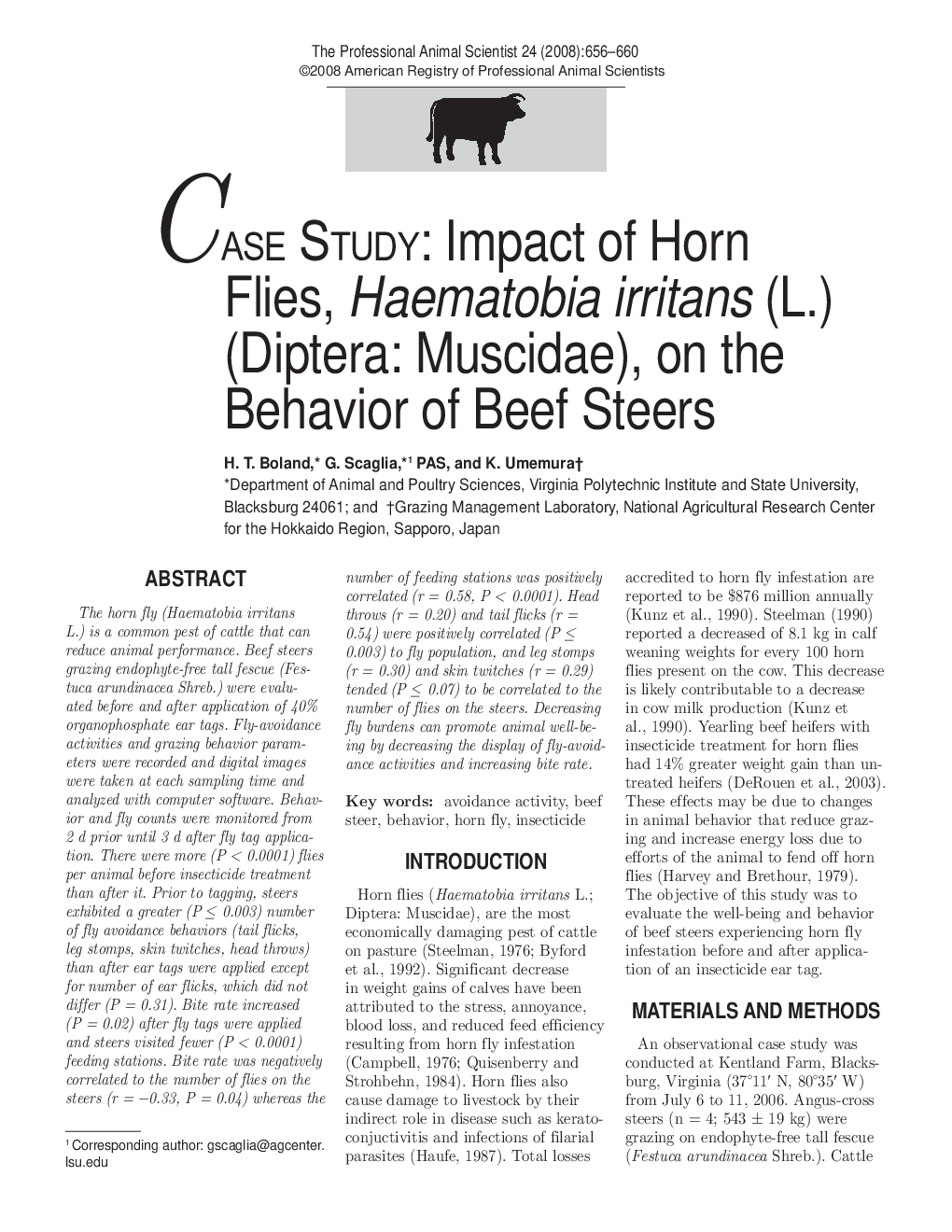| Article ID | Journal | Published Year | Pages | File Type |
|---|---|---|---|---|
| 2454541 | The Professional Animal Scientist | 2008 | 5 Pages |
Abstract
The horn fly (Haematobia irritans L.) is a common pest of cattle that can reduce animal performance. Beef steers grazing endophyte-free tall fescue (Festuca arundinacea Shreb.) were evaluated before and after application of 40% organophosphate ear tags. Fly-avoidance activities and grazing behavior parameters were recorded and digital images were taken at each sampling time and analyzed with computer software. Behavior and fly counts were monitored from 2 d prior until 3 d after fly tag application. There were more (P < 0.0001) flies per animal before insecticide treatment than after it. Prior to tagging, steers exhibited a greater (P ⤠0.003) number of fly avoidance behaviors (tail flicks, leg stomps, skin twitches, head throws) than after ear tags were applied except for number of ear flicks, which did not differ (P = 0.31). Bite rate increased (P = 0.02) after fly tags were applied and steers visited fewer (P < 0.0001) feeding stations. Bite rate was negatively correlated to the number of flies on the steers (r = ⤠0.33, P = 0.04) whereas the number of feeding stations was positively correlated (r = 0.58, P < 0.0001). Head throws (r = 0.20) and tail flicks (r = 0.54) were positively correlated (P ⤠0.003) to fly population, and leg stomps (r = 0.30) and skin twitches (r = 0.29) tended (P ⤠0.07) to be correlated to the number of flies on the steers. Decreasing fly burdens can promote animal well-being by decreasing the display of fly-avoidance activities and increasing bite rate.
Related Topics
Life Sciences
Agricultural and Biological Sciences
Animal Science and Zoology
Authors
H.T. Boland, G. PAS, K. Umemura,
